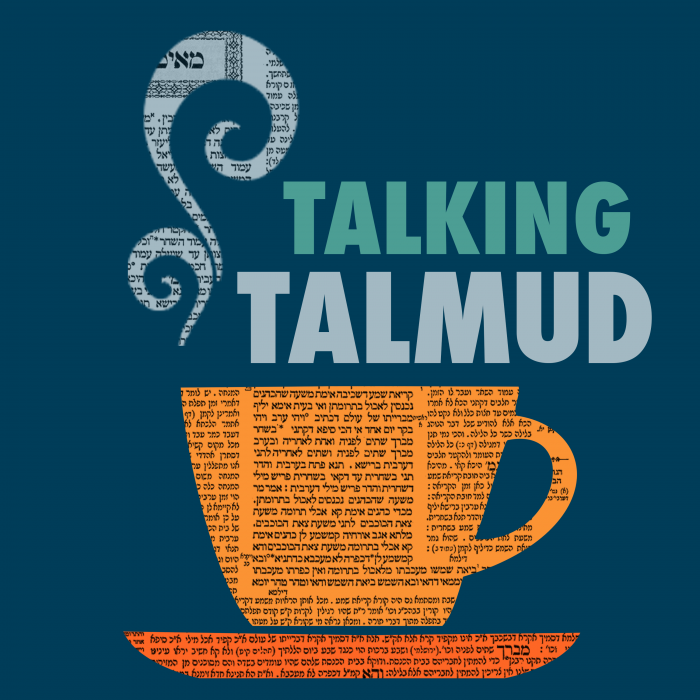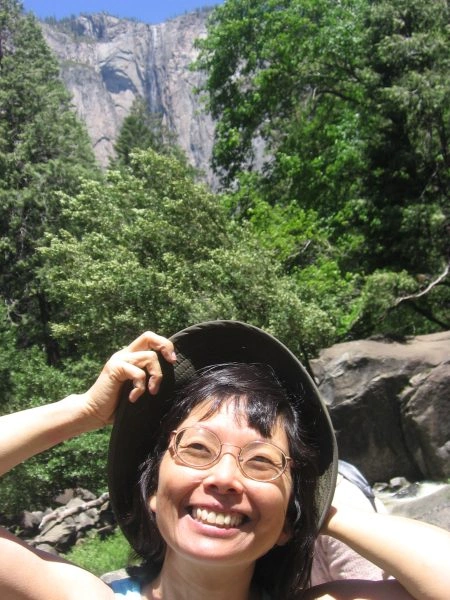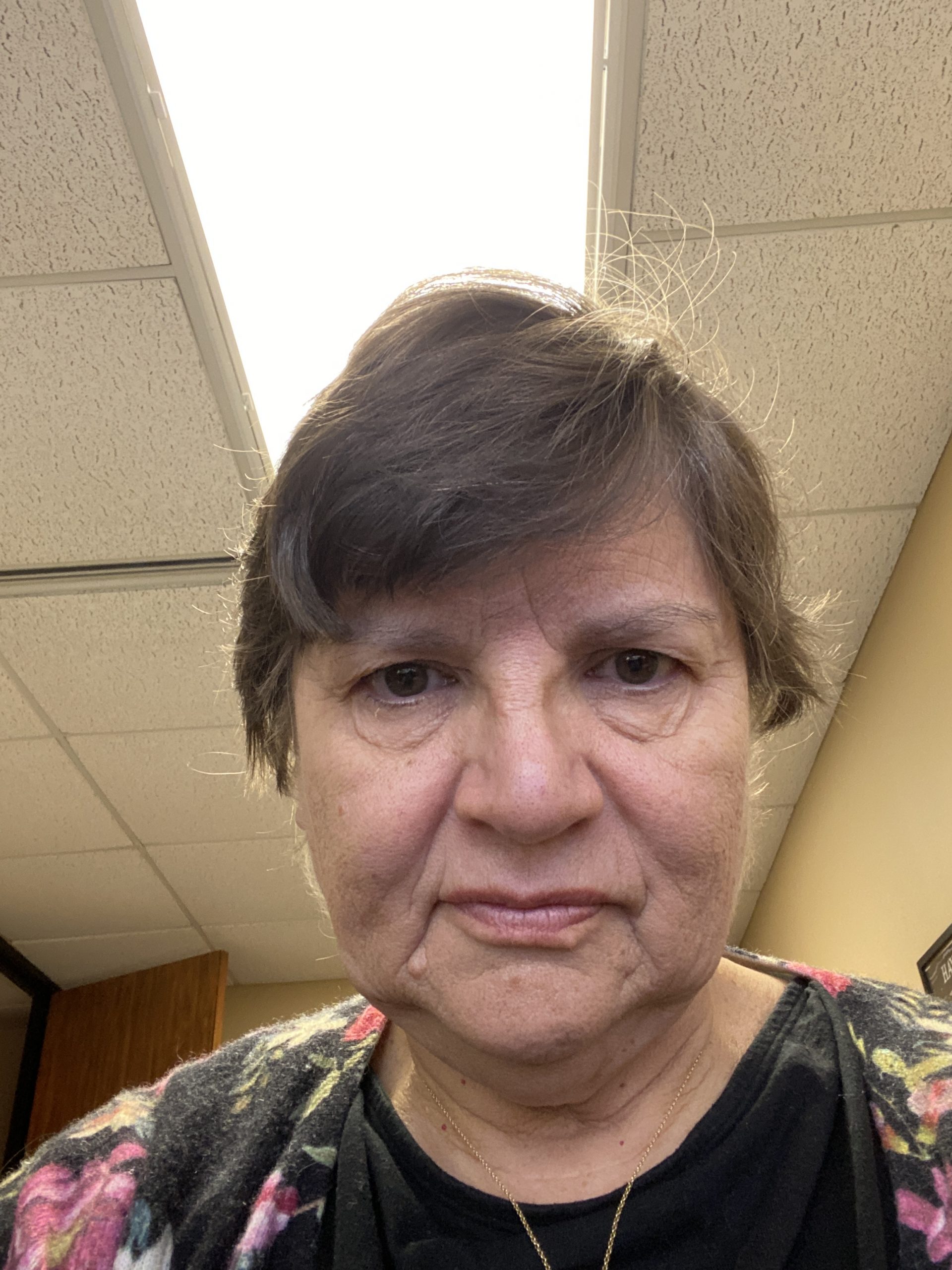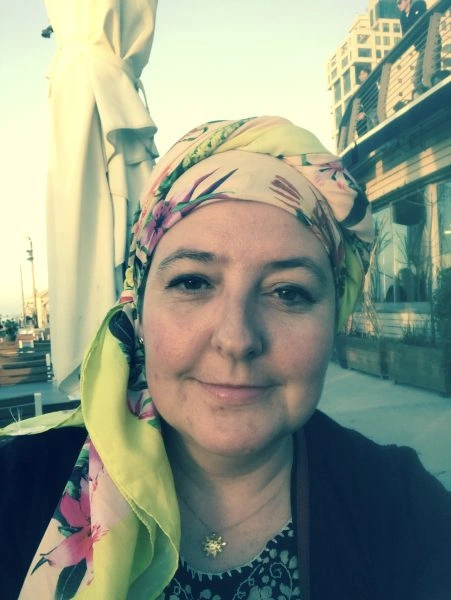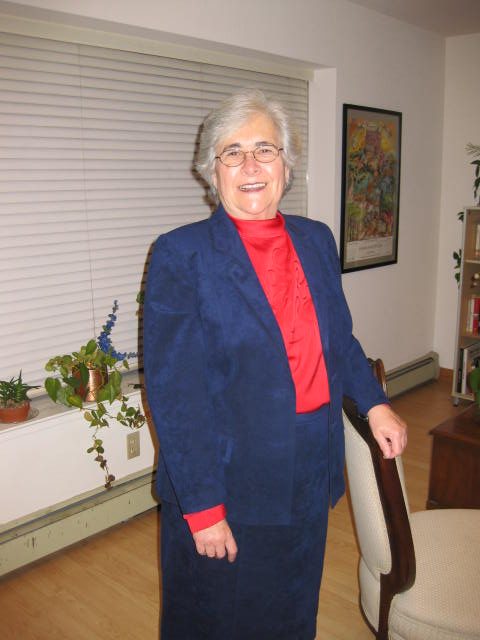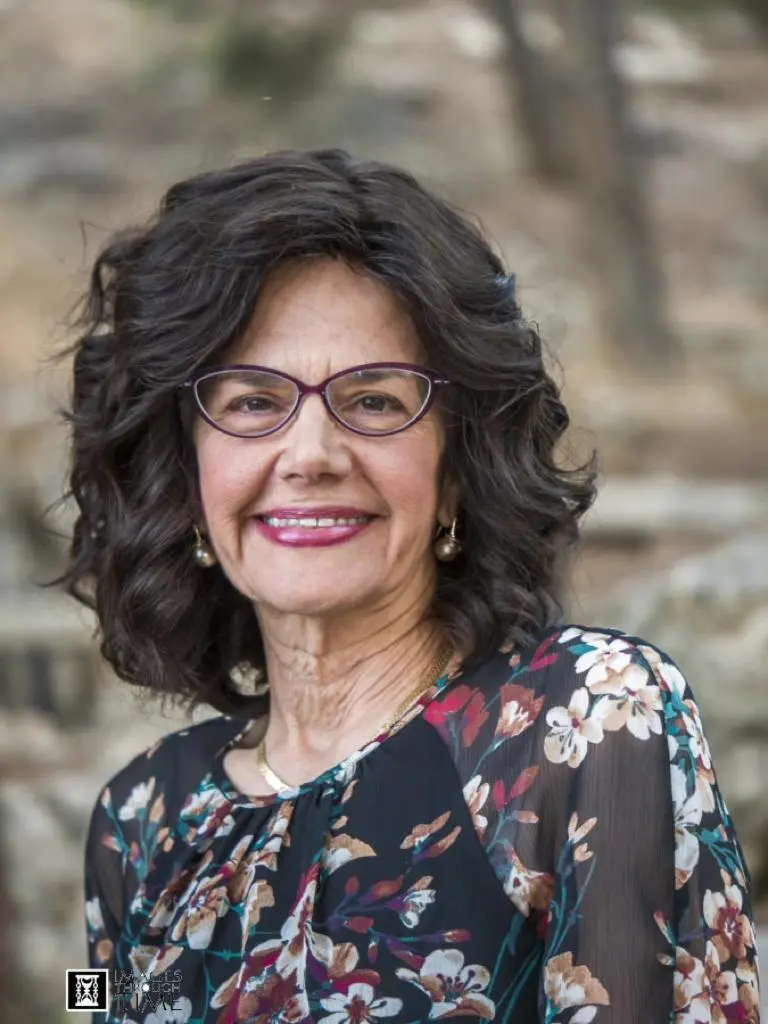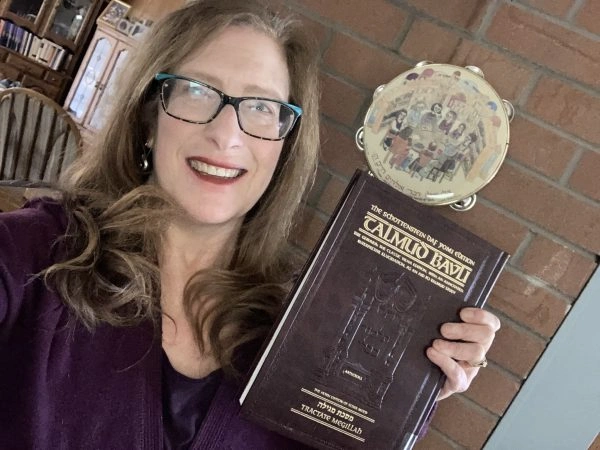Yevamot 102
גֵּר דָּן אֶת חֲבֵירוֹ דְּבַר תּוֹרָה, שֶׁנֶּאֱמַר: ״שׂוֹם תָּשִׂים עָלֶיךָ מֶלֶךְ אֲשֶׁר יִבְחַר ה׳ אֱלֹהֶיךָ בּוֹ מִקֶּרֶב אַחֶיךָ תָּשִׂים עָלֶיךָ מֶלֶךְ״. ״עָלֶיךָ״ הוּא דְּבָעֵינַן ״מִקֶּרֶב אַחֶיךָ״, אֲבָל גֵּר דָּן אֶת חֲבֵירוֹ גֵּר.
By Torah law a convert may judge his fellow convert, as it is stated: “You shall set a king over you, whom the Lord your God shall choose; one from among your brothers you shall set king over you” (Deuteronomy 17:15). The Gemara deduces from the terminology of the phrase “over you,” i.e., when presiding over Jews by birth either as a king, a judge, or any other official, that from here it is where we require that the official must be: “From among your brothers,” meaning a Jew by birth. However, a convert may judge his fellow convert, as the requirement of “one from among your brothers” doesn’t apply when presiding over fellow converts.
וְאִם הָיְתָה אִמּוֹ מִיִּשְׂרָאֵל — דָּן אֲפִילּוּ יִשְׂרָאֵל. וּלְעִנְיַן חֲלִיצָה עַד שֶׁיְּהֵא אָבִיו וְאִמּוֹ מִיִּשְׂרָאֵל, שֶׁנֶּאֱמַר: ״וְנִקְרָא שְׁמוֹ בְּיִשְׂרָאֵל״.
And if the convert’s mother was from Israel, he may even preside as a judge in a court to adjudicate legal matters involving a native-born Jew. But with regard to ḥalitza, he may not act as a judge unless both his father and his mother were from Israel from birth, as it is stated with regard to ḥalitza: “And his name shall be called in Israel: The house of he who had his shoe removed” (Deuteronomy 25:10), implying that he must be born as a member of the Jewish people from both of his parents.
אָמַר רַבָּה אָמַר רַב כָּהֲנָא אָמַר רַב: אִם יָבֹא אֵלִיָּהוּ וְיֹאמַר: ״חוֹלְצִין בְּמִנְעָל״ — שׁוֹמְעִין לוֹ. ״אֵין חוֹלְצִין בְּסַנְדָּל״ — אֵין שׁוֹמְעִין לוֹ, שֶׁכְּבָר נָהֲגוּ הָעָם בְּסַנְדָּל.
§ Rabba said that Rav Kahana said that Rav said: If Elijah the Prophet should come and say: One may perform ḥalitza using a soft leather shoe, the Rabbis would listen to him. But if he says: One may not perform ḥalitza using a hard leather sandal, they would not listen to him, for the people already have established the practice of performing ḥalitza using a sandal.
וְרַב יוֹסֵף אָמַר רַב כָּהֲנָא אָמַר רַב: אִם יָבֹא אֵלִיָּהוּ וְיֹאמַר: ״אֵין חוֹלְצִין בְּמִנְעָל״ — שׁוֹמְעִין לוֹ. ״אֵין חוֹלְצִין בְּסַנְדָּל״ — אֵין שׁוֹמְעִין לוֹ, שֶׁכְּבָר נָהֲגוּ הָעָם בְּסַנְדָּל.
And Rav Yosef said that Rav Kahana said that Rav said: If Elijah the Prophet should come and say: One may not perform ḥalitza using a soft leather shoe, they would listen to him. But if he says: One may not perform ḥalitza using a hard leather sandal, they would not listen to him, for the people already have established the practice of performing ḥalitza using a sandal.
מַאי בֵּינַיְיהוּ? אִיכָּא בֵּינַיְיהוּ מִנְעָל לְכַתְּחִלָּה.
The Gemara asks: What is the practical difference between these two opinions? Seemingly, they both say the same thing. The Gemara answers: The practical difference between them is with respect to performing ḥalitza with a soft leather shoe ab initio. According to Rabba’s opinion, one may not perform ḥalitza this way ab initio, as Rabba said that only if Elijah comes and permits it would he be heeded, implying that until Elijah does so one may not perform ḥalitza this way. According to Rav Yosef’s opinion, one may perform ḥalitza with a soft leather shoe until Elijah comes and teaches us otherwise.
וּלְמַאן דְּאָמַר אֲפִילּוּ לְכַתְּחִלָּה, וְהָתְנַן: חָלְצָה בְּמִנְעָל — חֲלִיצָתָהּ כְּשֵׁרָה. דִּיעֲבַד אִין, לְכַתְּחִלָּה לָא!
The Gemara asks: And according to the one who says that one may even perform ḥalitza with a soft leather shoe ab initio, didn’t we learn in the mishna (101a): If she performed ḥalitza with a soft leather shoe, her ḥalitza is valid, and the past tense wording indicates after the fact, yes, but it is not valid ab initio?
הוּא הַדִּין דַּאֲפִילּוּ לְכַתְּחִלָּה. וְאַיְּידֵי דְבָעֵי לְמִיתְנֵי סֵיפָא בְּאַנְפִּילְיָא חֲלִיצָתָהּ פְּסוּלָה, דַּאֲפִילּוּ דִּיעֲבַד, תְּנָא נָמֵי רֵישָׁא דִּיעֲבַד.
The Gemara answers: The same is true that one may perform ḥalitza with a soft leather shoe even ab initio, but since the tanna wished to teach in the latter clause of that mishna: If an anpileya, a soft shoe made of cloth, was used for ḥalitza, her ḥalitza is disqualified even after the fact, he also taught the first clause of the mishna using wording that indicates validity after the fact, even though it is in fact permitted even ab initio.
וּמִנְעָל לְכַתְּחִלָּה תַּנָּאֵי הִיא. דְּתַנְיָא, אָמַר רַבִּי יוֹסֵי: פַּעַם אַחַת הָלַכְתִּי לִנְצִיבִין, מָצָאתִי זָקֵן אֶחָד. אָמַרְתִּי לוֹ: כְּלוּם אַתָּה בָּקִי בְּרַבִּי יְהוּדָה בֶּן בְּתֵירָא? אָמַר לִי: הֵן, וְעַל שׁוּלְחָנִי הוּא תָּדִיר. כְּלוּם רָאִיתָ שֶׁחָלַץ בִּיבָמָה?
The Gemara comments: And performing ḥalitza with a soft leather shoe ab initio is a dispute between tanna’im, as it is taught in a baraita, Rabbi Yosei said: One time I went to the city of Netzivin in Babylonia, and I found there a certain Elder. I said to him: Do you know Rabbi Yehuda ben Beteira, who was from Netzivin? He said to me: Yes, and he is a frequent visitor at my table. I asked the Elder: Have you ever seen if he conducted the ḥalitza of a yevama?
אָמַר לִי: רָאִיתִי שֶׁחָלַץ הַרְבֵּה פְּעָמִים. בְּמִנְעָל אוֹ בְּסַנְדָּל? אָמַר לִי: וְכִי חוֹלְצִין בְּמִנְעָל?! (וְהַתּוֹרָה אָמְרָה ״נַעֲלוֹ״, וְלֹא מִנְעָלוֹ), אָמַרְתִּי לוֹ: אִם כֵּן, מָה רָאָה רַבִּי מֵאִיר לוֹמַר חָלְצָה בְּמִנְעָל חֲלִיצָתָהּ כְּשֵׁירָה?!
He said to me: I saw that he conducted ḥalitza many times. I asked him: Using a soft leather shoe or a hard leather sandal? He said to me: Does anyone allow performing ḥalitza with a soft leather shoe? But the Torah said: “His shoe [na’alo]” (Deuteronomy 25:9) and not: His shoe [minalo]. I said to him: If so, what did Rabbi Meir see that made him say that if a woman performed ḥalitza using a soft leather shoe her ḥalitza is valid?
רַבִּי יַעֲקֹב אוֹמֵר מִשְּׁמוֹ: חוֹלְצִין בְּמִנְעָל לְכַתְּחִלָּה. וּמַאן דְּאָמַר לְכַתְּחִלָּה לָא, מַאי טַעְמָא?
Rabbi Ya’akov says in the name of Rabbi Meir: One may perform ḥalitza using a soft leather shoe ab initio. The Gemara explains: And for the one who said one may not perform ḥalitza with a soft leather shoe ab initio, what is the reason for this?
אִילֵּימָא מִשּׁוּם דְּהָוְיָא פַּנְתָּא מֵעַל וְאַרְקְתָא מֵעַל דְּמֵעַל, וְהַתּוֹרָה אָמְרָה ״מֵעַל״, וְלֹא מֵעַל דְּמֵעַל — אִי הָכִי, אֲפִילּוּ דִּיעֲבַד נָמֵי לָא!
If we say that a soft leather shoe is disqualified because the upper side of the soft leather shoe [panta] is on his foot directly, and the straps [arketa] tied around the upper portion of the shoe are like a second shoe on top of the shoe that is directly on top of his foot, and the Torah says: “Remove the shoe from on his foot,” indicating that the entire shoe must be “on his foot” but not from on something else that is on his foot, if so, then even after the fact as well, it should not be fit for use. If a soft leather shoe is unfit for ḥalitza by Torah law, it should be prohibited under all circumstances.
גְּזֵירָה מִשּׁוּם מִנְעָל מְרוּפָּט.
Rather, it is a rabbinic decree due to the concern that one might use a torn soft leather shoe, which may nevertheless be worn if torn due to its softness but is prohibited as it does not cover his foot. No similar concern exists with regard to a torn sandal, as due to its hard exterior it would never be worn if torn, and therefore there is no concern that it will be used for ḥalitza.
אִי נָמֵי מִשּׁוּם חֲצִי מִנְעָל.
Alternatively, it is a rabbinic decree due to concern that one might perform ḥalitza with a half shoe, as the ḥalitza shoe must cover most of the foot, yet there are some who wear soft leather shoes that cover only half of the foot. Therefore, there is a prohibition against using a soft leather shoe for ḥalitza ab initio for fear that a half shoe might also accidentally be used. No similar fear exists with a hard leather sandal as a half sandal is never worn.
אָמַר רַב: אִי לָאו דַּחֲמֵיתֵיהּ לְחַבִּיבִי דַּחֲלַץ בְּסַנְדָּל דְּאִית לֵהּ שִׁינְצִין, אֲנָא לָא הֲוַאי חָלֵיצְנָא אֶלָּא בְּסַנְדָּלָא דְטַיָּיעָא דְּמִיהַדַּק טְפֵי. וְהַאי דִּידַן, אַף עַל גַּב דְּאִית בֵּיהּ חוּמַרְתָּא, קָטְרִינַן בֵּיהּ מִיתְנָא, כִּי הֵיכִי דְּתֶהְוֵי חֲלִיצָתָהּ מְעַלַּיְיתָא.
Rav said: If I had not seen my beloved uncle, Rabbi Ḥiyya, conduct a ḥalitza using a sandal with laces, I would not have conducted ḥalitza with anything other than a sandal of Arabs, which is more tight fitting and snug. The Gemara explains: And with regard to this sandal of ours, i.e., the customary sandal of that day, although it does have a ring [ḥumrata] on top to ensure that it will not fall off the foot easily, we tie a strap to it during ḥalitza in order to make it tighter, so that her ḥalitza will be of the highest standard. The strap is tied on so that the sandal will not come off by itself, to ensure that the yevama will have to untie the strap in order to remove the sandal.
סִימַן: הַתָּרַת יְבָמָה סַנְדָּל. אָמַר רַב יְהוּדָה אָמַר רַב: הַתָּרַת יְבָמָה לַשּׁוּק — בִּשְׁמִיטַת רוֹב הֶעָקֵב.
§ The Gemara presents a mnemonic device for the following three halakhot that Rav Yehuda taught in the name of Rav: Hatarat, meaning release of; yevama; sandal. This mnemonic serves as a reminder that the release of a yevama is done through removing a sandal. Rav Yehuda said that Rav said: The release of a yevama to enable her marriage to a member of the public occurs when most of the heel is removed from the shoe. Even though the shoe has not been entirely removed, or even removed from most of the yavam’s foot; it is still permitted for her to remarry.
מֵיתִיבִי: הוּתְּרוּ רְצוּעוֹת מִנְעָל וְסַנְדָּל, אוֹ שֶׁשָּׁמַט רוֹב הָרֶגֶל — חֲלִיצָתָהּ פְּסוּלָה.
The Gemara raises an objection from the following baraita: If the straps of a soft leather shoe or a hard leather sandal were untied, but not through the actions of the yevama, or if the yavam removed most of his foot from the shoe himself before the yevama completed the removal, her ḥalitza is disqualified.
טַעְמָא דְּשָׁמַט הוּא, הָא שָׁמְטָה הִיא — חֲלִיצָתָהּ כְּשֵׁרָה. רוֹב הָרֶגֶל אִין, רוֹב הֶעָקֵב לָא!
The Gemara infers: The reason her ḥalitza is disqualified is specifically that he removed most of his foot and she only completed the removal, but had she removed most of the foot from the shoe, then her ḥalitza would be valid. The Gemara continues: If so, yes, only when the yevama removes most of the foot is the ḥalitza valid, but if she removed only most of the heel, it would not be sufficient.
לֹא: הַיְינוּ רוֹב הָרֶגֶל, הַיְינוּ רוֹב הֶעָקֵב. וְאַמַּאי קָרוּ לֵיהּ רוֹב הָרֶגֶל — דְּכוּלָּא חֵיילָא דְכַרְעָא עֲלֵיהּ דְּחִיס.
The Gemara rejects this question: No, most of the foot is the same as most of the heel, and therefore the inference should be that even if she removed most of the heel from the shoe the ḥalitza is valid. And why do they call it: Most of the foot? Because the whole weight of the leg puts pressure on the heel.
מְסַיַּיע לֵיהּ לְרַבִּי יַנַּאי: דְּאָמַר רַבִּי יַנַּאי בֵּין שֶׁהִתִּיר הוּא וְשָׁמְטָה הִיא, בֵּין שֶׁהִתִּירָה הִיא וְשָׁמַט הוּא — חֲלִיצָתָהּ פְּסוּלָה, עַד שֶׁתַּתִּיר הִיא וְתַשְׁמִיט הִיא. בָּעֵי רַבִּי יַנַּאי: קְרָעַתְהוּ, מַהוּ? שְׂרָפַתְהוּ, מַהוּ? גַּלּוֹיֵי כַּרְעָא בָּעֵינַן, וְהָאִיכָּא? אוֹ דִלְמָא חֲלִיצָה בָּעֵינַן, וְלֵיכָּא? תֵּיקוּ.
The Gemara comments: This baraita supports Rabbi Yannai, as Rabbi Yannai said: Whether he unties the shoe and she removes it, or whether she unties it and he removes it, her ḥalitza is disqualified unless she both unties it and takes it off. And on the same topic, Rabbi Yannai asked: If she did not remove the sandal, but instead ripped it off him, what is the halakha? If she burned it using coals, what is the halakha? The Gemara presents the real issue in question: Is exposure of the foot the essential act of ḥalitza that we require, through any act of removing that which covers the foot, which exists here? Or perhaps it is removal of the shoe from over the foot that we require, which is lacking here? No answer was found to this question, so the Gemara concludes: The question shall stand unresolved.
בְּעָא מִינֵּיהּ רַבִּי נְחֶמְיָה מֵרַבָּה: שְׁנֵי מִנְעָלִים זֶה עַל גַּב זֶה, מַהוּ? הֵיכִי דָמֵי: אִילֵּימָא דִּשְׁלַפְתֵּיהּ לְעִילַּאי וְקָאֵי תַּתַּאי — ״מֵעַל״ אָמַר רַחֲמָנָא, וְלֹא מֵעַל דְּמֵעַל. לָא צְרִיכָא: דִּקְרַעְתֵּיהּ לְעִילַּאי וּשְׁלַפְתֵּיהּ לְתַתַּאי, וְקָאֵי עִילַּאי, מַאי? חֲלִיצָה בָּעֵינַן, וְהָא אִיכָּא? אוֹ דִלְמָא גַּלּוֹיֵי כַּרְעָא בָּעֵינַן, וְלֵיכָּא?
Rabbi Neḥemya asked Rabba the following question: If the man was wearing two shoes, one on top of the other, what is the halakha? The Gemara asks: What are the circumstances of the case? If we say that she removed the outer shoe and the inner shoe remains in place, but the Merciful One states in the Torah: “From on his foot” and not: From on that which is on his foot. The Gemara answers: No, this question wasn’t asked in a case where the inner shoe remained on his foot. Rather, it is necessary in a case where she tore the outer shoe and took off the inner shoe, and the outer one still remains on his foot although it is torn. The question centers around the previous one with regard to the nature of ḥalitza: What is the halakha for valid ḥalitza? Is it removal of the shoe that we require, which we have brought about in this example? Or perhaps it is exposing the foot that we require, which is lacking here, as the foot is still covered by the torn outer shoe.
וּמִי אִיכָּא כִּי הַאי גַוְונָא? אִין, דְּחַזְיוּהּ רַבָּנַן לְרַב יְהוּדָה דִּנְפַק בְּחַמְשָׁא זוּזֵי מוֹקֵי לְשׁוּקָא.
The Gemara asks: Is there really a case like this where people wear one shoe on top of another? The Gemara answers: Yes, for the Sages saw Rav Yehuda, who went out once to the market wearing five pairs of shoes, which were similar to slippers, one on top of another.
אָמַר רַב יְהוּדָה אָמַר רַב: יְבָמָה שֶׁהִגְדִּילָה בֵּין הָאַחִין — מוּתֶּרֶת לִינָּשֵׂא לְאֶחָד מִן הָאַחִין, וְאֵין חוֹשְׁשִׁין שֶׁמָּא חָלְצָה סַנְדָּל לְאֶחָד מֵהֶן. טַעְמָא, דְּלָא חָזֵינַן, הָא חָזֵינַן — חָיְישִׁינַן.
Rav Yehuda said another halakha that Rav said: An underage yevama who grew up among her husband’s brothers before any ḥalitza was performed is permitted to marry one of the brothers through levirate marriage, and we are not concerned about the possibility that during the time she was in the company of her yevamin she removed a sandal from one of them, and thereby she would have already performed ḥalitza. The Gemara infers from this statement: The reason it is permitted to perform levirate marriage now is specifically that we did not see her remove one of their shoes, but if in fact we did see her do so, we are concerned and treat her as a yevama who already performed ḥalitza and is thereby forbidden to all the brothers.
וְהָא תַּנְיָא: בֵּין שֶׁנִּתְכַּוֵּון הוּא וְלֹא נִתְכַּוְּונָה הִיא, בֵּין שֶׁנִּתְכַּוְּונָה הִיא וְלֹא נִתְכַּוֵּון הוּא — חֲלִיצָתָהּ פְּסוּלָה, עַד שֶׁיִּתְכַּוְּונוּ שְׁנֵיהֶם כְּאֶחָד! הָכִי קָאָמַר: אַף עַל גַּב דַּחֲזֵינַן — אֵין חוֹשְׁשִׁין שֶׁמָּא כִּוְּונוּ.
The Gemara challenges: But isn’t it taught in a baraita: Whether he intended to perform ḥalitza and she did not intend to, or whether she intended to perform ḥalitza and he did not intend to, the ḥalitza is invalid, unless they both intended it as one to perform a proper act of ḥalitza? The Gemara answers: This is what Rav said: Even if we did see that she removed a shoe from one of them, we are not concerned that perhaps they intended to perform ḥalitza.
וְאִיכָּא דְּאָמְרִי: טַעְמָא, דְּלָא חָזֵינַן, הָא חָזֵינַן — חוֹשְׁשִׁין. וּדְקָא תָנֵא בָּעֵי כַּוּוֹנָה — הָנֵי מִילֵּי לְאִישְׁתְּרוֹיֵי לְעָלְמָא, אֲבָל לְאַחִין מִיפַּסְלָא.
And there are those who say the inference from Rav’s statement should be made in the opposite manner: The reason it is permitted for her to perform levirate marriage now is specifically that we did not see her remove a shoe from one of the brothers. But if we did see, we would be concerned and would treat her as a yevama who already performed ḥalitza, despite our knowledge that she did not intend to perform ḥalitza. And with regard to that which was taught in the baraita, that intention is required, this applies only as far as validating the act of ḥalitza in order to permit her to marry a stranger. But performing an act of ḥalitza even without intention is sufficient to disqualify her for the brothers, rendering prohibited an act of levirate marriage afterward.
אָמַר רַב יְהוּדָה אָמַר רַב: סַנְדָּל הַתָּפוּר בְּפִשְׁתָּן — אֵין חוֹלְצִין בּוֹ, שֶׁנֶּאֱמַר: ״וָאֶנְעֲלֵךְ תָּחַשׁ״. וְאֵימָא: תַּחַשׁ — אִין, מִידֵּי אַחֲרִינָא — לָא! ״נַעַל״ ״נַעַל״ רִיבָּה.
Rav Yehuda also said that Rav said: One may not perform ḥalitza using a sandal that was sewn together with threads made of flax, as it is stated: “And I made you shoes of taḥash skin” (Ezekiel 16:10), which is the skin of an animal, implying that a shoe is something made entirely of leather. The Gemara challenges: If the source is “taḥash,” let us say: A shoe made of taḥash skin, yes, it is valid; but if made of anything else, no. The Gemara rejects this: Because “shoe” and “shoe” are written in the Torah multiple times, this amplifies and includes all types of shoes crafted from leather skins as valid for performing ḥalitza.
אִי ״נַעַל״ ״נַעַל״ רִיבָּה, אֲפִילּוּ כֹּל מִילֵּי נָמֵי! אִם כֵּן, ״תָּחַשׁ״ מַאי אַהֲנִי לֵיהּ?
The Gemara asks: If the inclusion of the words “shoe” and “shoe” amplifies, then should one include as valid for performing ḥalitza shoes crafted from even any other materials as well, including those not produced from leather at all? The Gemara answers: If so, what purpose does “taḥash” serve, as nothing is learned from it? Rather, from the word taḥash it is derived that the shoe must be crafted entirely of leather, but all types of leather are included because the word “shoe” is repeated in the Torah numerous times.
בְּעָא מִינֵּיהּ רַבִּי אֶלְעָזָר מֵרַב: הוּא שֶׁל עוֹר, וּתְרֵיסִיּוֹתָיו שֶׁל שֵׂעָר, מַהוּ? אֲמַר לֵיהּ: מִי לָא קָרֵינַן בֵּיהּ ״וָאֶנְעֲלֵךְ תָּחַשׁ״? אִי הָכִי, כּוּלּוֹ שֶׁל שֵׂעָר נָמֵי! הָהוּא קֻרְקָא מִקְּרֵי.
Rabbi Elazar asked Rav: What is the status of the following type of sandal used for performing ḥalitza? In a case where it, the shoe itself, is made of leather, and the sections that hold its straps [tereisiyyot] are made of hair, as they were woven together with goat’s hair, what is the halakha? He said to him: Do we not refer to such a sandal as: “And I made you shoes of taḥash”? Since it is crafted from material that comes from an animal it is valid. The Gemara asks: If that is so, i.e., that anything derived from an animal is valid, then even if it is fashioned entirely of hair it should also be valid. The Gemara answers: That would be called a slipper, not a shoe.
אֲמַר לֵיהּ רַב כָּהֲנָא לִשְׁמוּאֵל: מִמַּאי דְּהַאי ״וְחָלְצָה נַעֲלוֹ מֵעַל רַגְלוֹ״ מִישְׁלַף הוּא — דִּכְתִיב: ״וְחִלְּצוּ אֶת הָאֲבָנִים אֲשֶׁר בָּהֵן הַנָּגַע״.
Rav Kahana said to Shmuel: From where is it known that this phrase: “And she shall remove [ḥaltza] his shoe from on his foot” (Deuteronomy 25:9), means to remove? As it is written: “Then the priest shall command, and they shall take out [ḥiltzu] the stones in which the plague is” (Leviticus 14:40), indicating that the word ḥaltza means that they shall remove the stones from their place.
וְאֵימָא זָרוֹזֵי הוּא, דִּכְתִיב: ״הֵחָלְצוּ מֵאִתְּכֶם אֲנָשִׁים לַצָּבָא״! הָתָם נָמֵי — שַׁלּוֹפֵי מִבֵּיתָא לִקְרָבָא.
The Gemara asks whether the word ḥaltza can be interpreted differently based upon its apparent meaning in other contexts: But could you say it is a term for strengthening, as it is written: “Arm [heḥaletzu] men from among you for the army” (Numbers 31:3), meaning that men among you will be strengthened and take up arms to prepare for battle? The Gemara answers: There too, the meaning of the word is referring to taking something from its place, as it means removing people from their houses in order to go out to war.
וְהָכְתִיב: ״יְחַלֵּץ עָנִי בְעׇנְיוֹ״! בִּשְׂכַר עׇנְיוֹ, יְחַלְּצוֹ מִדִּינָהּ שֶׁל גֵּיהִנָּם.
The Gemara challenges: But isn’t it written: “He delivers [yeḥaletz] the afflicted by His affliction [be’onyo]” (Job 36:15)? This indicates that the afflicted one becomes stronger due to his affliction, as, if the intention was to deliver him from his affliction, it should have said: From His affliction, rather than “by His affliction.” The Gemara answers that the verse should be interpreted as follows: Be’onyo, in other words, as reward for his suffering from affliction, He shall deliver him from the judgment of Gehenna, as is understood from the term be’onyo, through the reward due to his affliction.
אֶלָּא הָא דִּכְתִיב: ״חֹנֶה מַלְאַךְ ה׳ סָבִיב לִירֵאָיו וַיְחַלְּצֵם״! בִּשְׂכַר יְרֵאָיו יְחַלְּצֵם מִדִּינָהּ שֶׁל גֵּיהִנָּם.
The Gemara challenges further: But with regard to that it is written: “The angel of the Lord encamps around those who fear Him and delivers them [vayeḥaltzem]” (Psalms 34:8), doesn’t vayeḥaltzem rather mean: He shall strengthen them? The Gemara answers: The verse means: As a reward for those that fear Him, He shall deliver them from the judgment of Gehenna. Therefore, the Gemara interprets vayeḥaltzem as “delivers them,” not as: Strengthens them.
אֶלָּא הָא דִּכְתִיב: ״וְעַצְמֹתֶיךָ יַחֲלִיץ״, וְאָמַר רַבִּי אֶלְעָזָר: זוֹ מְעוּלָּה שֶׁבַּבְּרָכוֹת, וְאָמַר רָבָא: זָרוֹזֵי גַּרְמֵי! אִין, מַשְׁמַע הָכִי וּמַשְׁמַע הָכִי. דְּהָכָא, אִי סָלְקָא דַעְתָּךְ זָרוֹזֵי הוּא, אִם כֵּן, לִכְתּוֹב רַחֲמָנָא ״וְחָלְצָה נַעֲלוֹ בְּרַגְלוֹ״!
The Gemara challenges further: But with regard to that which is written: “And the Lord will guide you, and satisfy your soul in drought, and make your bones strong [yaḥalitz]” (Isaiah 58:11), and Rabbi Elazar said regarding that verse: This is the greatest of blessings, and Rava said it means: Strengthening of bones. This seems to indicate that the root of the word ḥalitza is referring to strengthening. The Gemara answers: Yes, it has this connotation, and it has this connotation, i.e., the root ḥ-l-tz sometimes connotes removal and sometimes connotes strengthening. But here, only one meaning is possible, as, if it enters your mind that ḥalitza here connotes strengthening, then let the Merciful One write in the Torah: She shall strengthen [ḥaletza] his shoe on his foot [beraglo], indicating that she should tighten the shoe on his foot, rather than stating: “From on his foot [me’al raglo],” which indicates that she is removing something from his foot.
אִי כְּתַב רַחֲמָנָא ״בְּרַגְלוֹ״, הֲוָה אָמֵינָא: ״בְּרַגְלוֹ״ — אִין, בְּשׁוֹקוֹ — לָא, כְּתַב רַחֲמָנָא ״מֵעַל רַגְלוֹ״ דַּאֲפִילּוּ בְּשׁוֹקוֹ. אִם כֵּן, לִכְתּוֹב רַחֲמָנָא ״בְּמֵעַל רַגְלוֹ״. מַאי ״מֵעַל רַגְלוֹ״ — שְׁמַע מִינַּהּ מִישְׁלַף הוּא.
The Gemara responds: If the Merciful One had written in the Torah: On his foot [beraglo], I would have said she must strengthen and tighten the shoe on his foot, yes, but on his calf, no; and if his foot were amputated she may no longer perform ḥalitza. Therefore, the Merciful One writes in the Torah: “From on his foot [me’al raglo],” to teach that she may strengthen the shoe even on his calf, which is part of the leg, or regel, above the foot. The Gemara answers: If so, and ḥalitza really means strengthening, let the Merciful One write in the Torah: She shall strengthen his shoe on the upper part of his foot [beme’al raglo], indicating that the shoe can also be tightened on the area of the calf. What then is the meaning of “from on his foot [me’al raglo],” which is written in the verse? Learn from here that in this context the word ḥalitza clearly indicates removal, meaning that the mitzva of ḥalitza is for the yevama to remove the shoe of the yavam and not to tighten it on his foot.
אֲמַר לֵיהּ הָהוּא מִינָא לְרַבָּן גַּמְלִיאֵל: עַמָּא דַּחֲלַץ לֵיהּ מָרֵיהּ מִינֵּיהּ, דִּכְתִיב: ״בְּצֹאנָם וּבִבְקָרָם יֵלְכוּ לְבַקֵּשׁ אֶת ה׳ וְלֹא יִמְצָאוּ חָלַץ מֵהֶם״.
Parenthetical to this discussion, the Gemara relates: A certain heretic said to Rabban Gamliel: You, the children of Israel, are a nation whose Master removed [ḥalatz] Himself from them, for God has left you in much the same way in which a yavam would perform ḥalitza with his yevama, as it is written: “With their flocks and with their herds they shall go to seek the Lord, but they shall not find Him. He has removed [ḥalatz] Himself from them [meihem]” (Hoshea 5:6). The heretic tried to use this verse as scriptural support that God has performed ḥalitza with the Jewish people.
אֲמַר לֵיהּ: שׁוֹטֶה, מִי כְּתִיב ״חָלַץ לָהֶם״? ״חָלַץ מֵהֶם״ כְּתִיב, וְאִילּוּ יְבָמָה דְּחָלְצוּ לָהּ אַחִין — מִידֵּי מְשָׁשָׁא אִית בֵּיהּ?
He, Rabban Gamliel, said to him: Imbecile, does it say: He performed ḥalitza to them [lahem]? Rather, it says “ḥalatz from them [meihem],” meaning it is as if they, the Jewish people, performed ḥalitza on Him. But if a yevama had her shoe removed by her yevamin, does this have any significance? Here too, the meaning of the verse is that the nation of Israel abandoned God by removing themselves from Him, and this abandonment has no significance.
בְּאַנְפִּילְיָא חֲלִיצָתָהּ פְּסוּלָה כּוּ׳. לְמֵימְרָא דְּאַנְפִּילְיָא לָאו מִנְעָל הוּא?
The Gemara analyzes the phrase used in the mishna that discusses the types of shoes that can be used for ḥalitza. It was taught in the mishna that if he was wearing a soft shoe [anpileya] made of cloth for ḥalitza, her ḥalitza is invalid. The Gemara explains: That is to say that an anpileya is not considered a shoe.
וּתְנַן נָמֵי: אֵין הַתּוֹרֵם נִכְנָס לֹא בְּפַרְגּוֹד חָפוּת וְלֹא בְּאַנְפִּילְיָא, וְאֵין צָרִיךְ לוֹמַר בְּמִנְעָל וְסַנְדָּל, לְפִי שֶׁאֵין נִכְנָסִין בְּמִנְעָל וְסַנְדָּל לָעֲזָרָה.
And we also learned similarly in a mishna (Shekalim 3:2): The one who collects the funds of shekels donated to the Temple from the chamber and puts them into baskets in order to be used may not enter to collect the funds wearing a garment [pargod] that is cuffed [ḥafut], nor wearing an anpileya, and needless to say that he may not enter wearing a shoe or a sandal, because one may not enter the Temple courtyard wearing a shoe or a sandal. It is prohibited for the one collecting funds from the chamber to enter the chamber wearing a garment or footwear in which money could be hidden, lest people come to suspect that he hid in them funds collected from the chamber. In any case, the wording of the mishna indicates that an anpileya is not considered a type of shoe, since it is permitted to enter the Temple wearing an anpileya when there is no reason for suspicion, unlike a shoe or sandal, which can never be worn in the Temple.
וּרְמִינְהוּ: אֶחָד מִנְעָל וְסַנְדָּל וְאַנְפִּילְיָא, לֹא יְטַיֵּיל בָּהֶן, לֹא מִבַּיִת לְבַיִת וְלֹא מִמִּטָּה לְמִטָּה!
And the Gemara raises a contradiction from a baraita concerning what footwear is permitted on Yom Kippur, which seems to indicate otherwise: The halakha is the same for a soft leather shoe, and a hard leather sandal, and an anpileya, as one may not walk in them from one house to another, nor from one bed to another on Yom Kippur, due to the prohibition against wearing shoes, indicating that at least as far as Yom Kippur is concerned, an anpileya is considered a shoe.
אָמַר אַבָּיֵי: דְּאִית בֵּיהּ כְּתִיתֵי, וּמִשּׁוּם תַּעֲנוּג. אֲמַר לֵיהּ רָבָא: וּמִשּׁוּם תַּעֲנוּג בְּלֹא מִנְעָל בְּיוֹם הַכִּפּוּרִים מִי אֲסִירִי? וְהָא רַבָּה בַּר רַב הוּנָא כָּרֵיךְ סוּדָרָא אַכַּרְעֵיהּ וְנָפֵיק! אֶלָּא אָמַר רָבָא: לָא קַשְׁיָא, כָּאן בְּאַנְפִּילְיָא שֶׁל עוֹר, כָּאן בְּאַנְפִּילְיָא שֶׁל בֶּגֶד.
Abaye said: There, with regard to Yom Kippur, it is referring to an anpileya that has cushioning, and this is forbidden due to the pleasure that one derives from cushioned footwear on a day when people are commanded to afflict themselves. Rava said to him: But is footwear that is not considered to be shoes forbidden on Yom Kippur due to the pleasure one derives from wearing them? But Rabba bar Rav Huna would wrap a scarf on his feet and go out on Yom Kippur so his feet would not be injured, implying that there is no prohibition against wearing something comfortable on one’s foot, as long as it is not defined as a shoe. Rather, Rava said: This is not difficult. Here, when they said that an anpileya has the status of a shoe, it is referring to an anpileya made of leather. There, when they do not consider it a shoe, it is referring to an anpileya made of cloth.
הָכִי נָמֵי מִסְתַּבְּרָא, דְּאִי לָא תֵּימָא הָכִי, קַשְׁיָא יוֹם הַכִּפּוּרִים אַיּוֹם הַכִּפּוּרִים. דְּתַנְיָא: לֹא יְטַיֵּיל אָדָם בְּקוֹרְדָּקֵיסִין בְּתוֹךְ בֵּיתוֹ, אֲבָל מְטַיֵּיל הוּא בְּאַנְפִּילִין בְּתוֹךְ בֵּיתוֹ! אֶלָּא לָאו שְׁמַע מִינַּהּ: כָּאן בְּאַנְפִּילְיָא שֶׁל עוֹר, כָּאן בְּאַנְפִּילְיָא שֶׁל בֶּגֶד — שְׁמַע מִינַּהּ.
The Gemara adds: And so too, it is reasonable to distinguish in this manner, as, if you do not say so, it is difficult to reconcile the seeming contradiction between one statement about Yom Kippur and another statement about Yom Kippur. As it is taught in a baraita: A person shall not walk while wearing slippers [kordakisin] within his house on Yom Kippur, but he may walk while wearing an anpileya within his house. This would imply that wearing an anpileya is permitted, but the baraita quoted above taught that it is prohibited. Rather, must one not conclude from here that here, where it indicates that an anpileya is forbidden, it is referring to an anpileya made of leather, as they are considered like a shoe, and there, where an anpileya is permitted, it is referring to an anpileya made of cloth? The Gemara concludes: Indeed, learn from here that it is so.
תַּנְיָא כְּווֹתֵיהּ דְּרָבָא: חָלְצָה בְּמִנְעָל הַנִּפְרָם שֶׁחוֹפֶה אֶת רוֹב הָרֶגֶל, בְּסַנְדָּל הַנִּפְחָת שֶׁמְּקַבֵּל אֶת רוֹב הָרֶגֶל, בְּסַנְדָּל שֶׁל שַׁעַם וְשֶׁל סִיב, בְּקַב הַקִּיטֵּעַ, בְּמוּק, בִּסְמִיכַת הָרַגְלַיִם, בְּאַנְפִּילְיָא שֶׁל עוֹר, וְהַחוֹלֶצֶת מִן הַגָּדוֹל,
It is taught in a baraita in accordance with the opinion of Rava: If she performed ḥalitza using a shoe whose seams were opened up, which still covered most of the foot; or if she performed ḥalitza with a sandal whose sole was partially opened that still held most of the foot; or if she performed ḥalitza with a sandal made of cork [sha’am], or of fibers from a tree; or with a prosthetic foot of an amputee; or with a felt shoe [muk]; or with a leg blanket that an amputee makes for his feet as a covering in which to put the stumps of his legs, which is not an actual shoe; or with a leather anpileya; and likewise, a woman who performs ḥalitza with her yavam when he is an adult man,



